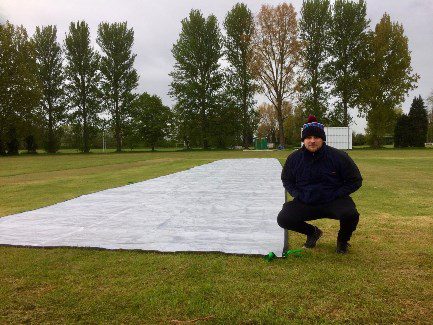
Plan head for end of season cricket pitch works…
20th August 2016
It may seem early to be thinking about end of season works for your natural turf cricket pitch – but planning ahead can pay dividends, as MD and former first class Groundsman, David Bates, explained in a recent column in The Cricketer magazine…
During the Halcyon days of summer, the end of the cricket season – and the groundworks associated with it – may seem a long way off. However, now is exactly when you should be looking out for issues with the cricket pitch that will need attention. By doing so, not only will you be well prepared for end of season works and be able to ensure you have the right equipment and materials to hand in good time, but you stand a chance of nipping potentially serious issues in the bud.
So, what should you keep an eye out for? During play ask yourself: Is the ball low and slow? Is there inconsistent bounce? Is grass coverage poor? Are surface levels poor? All are signs that your cricket pitch may need attention beyond the ‘typical’ end of season works – including scarification, over-seeding, top dressing and the application of fertiliser.
If these more serious signs are evident, you are likely to need to call in the experts to put it right. But that doesn’t mean you can’t understand what might be the solution and why – which is why we have formulated a series of ‘Natural Turf Processes’; to help grassroots groundsmen understand the issues they are facing and the potential solutions out there. Full table reconstruction – expensive, time consuming and writing the cricket pitch off for the whole of the following season – is not the only answer.
Less invasive processes such as Square Restoration and Profile Regeneration could be an option; allowing the pitch to be ready for play for the 2017 season – but you need to act now to ensure you can plan ahead for the necessary works. To discuss whether you need to go beyond normal end of season works on your cricket pitch this year, contact us.
Back to news









